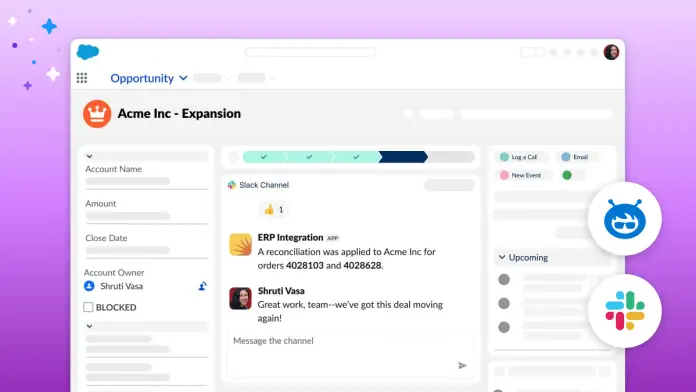Salesforce has taken a significant leap forward in enhancing team collaboration by embedding Slack directly into its popular Customer Relationship Management (CRM) platform. This integration promises to streamline workflows for small businesses, allowing teams to work more effectively while accessing critical customer data in real-time.
The recent announcement reveals that Slack is not just an add-on but a seamless extension of Salesforce’s core functionality. For small business owners grappling with fragmented communication and disorganized data, this innovation could serve as a game changer.
By embedding Slack into Salesforce, businesses can bridge the gap between their customer data and collaborative efforts. This integration means that sales teams can manage conversations about accounts, opportunities, and service cases without the constant back-and-forth of switching between applications. In today’s fast-paced environment, the ability to act quickly is vital, and this streamlined approach could help small businesses make decisions and solve problems more efficiently.
One of the standout features of this integration is the newly launched Salesforce channels. These channels run concurrently in both Slack and Salesforce, uniting CRM records with live conversations. This bi-directional access allows team members to maintain context and stay updated on crucial customer information without needing to chase down data or sift through numerous tabs.
Denise Dresser, CEO of Slack at Salesforce, emphasized this new approach: "With Salesforce channels, we’re breaking down barriers between customer data and teamwork, setting a foundation for powerful collaboration." This sentiment highlights the importance of collaboration not just within teams, but also across departments.
Another significant component of this enhanced integration is Tableau Next, a robust analytics tool that now lives directly within Slack. With the ability to share AI-powered metrics and visualizations seamlessly, teams can analyze data in the flow of work. Small business owners will benefit immensely from this feature, as it allows for real-time conversations around data insights, elevating their decision-making processes without needing to navigate away from the conversation.
However, adopting such a unified system isn’t without its challenges. Small businesses might initially experience a learning curve as teams adjust to the new workflows. Ensuring that permissions and data security protocols are correctly set up is also vital. Team members will need to authenticate their access to maintain compliance and security, which could pose a challenge for businesses with less tech-savvy employees.
Another crucial aspect to consider is how effectively the integration can address the issue of information overload. The data suggests that nearly half of workers struggle to find the information they need, leading to inefficiencies that cost companies significantly. Salesforce’s integration aims to change this by uniting conversations, customer records, and analytics into a single, intelligent platform.
Real-world applications for small businesses are already emerging. Early internal tests at Salesforce reveal that teams slashed information search time by 30%, demonstrating immediate efficiency gains. For instance, an account manager can close deals much faster by using a dedicated communication channel that involves finance and legal teams in real-time discussions. Similarly, new hires can quickly get up to speed by referencing historical data and insights all in one place.
Businesses must also actively consider how they can leverage this new tool to improve their communication strategies. For instance, marketing teams can better organize campaigns and analyze post-launch insights, ensuring they remain aligned with overall business goals.
The launch of Salesforce channels and the integration of Tableau Next marks a pivotal moment for small businesses looking to enhance productivity and collaboration. While the transition to a unified platform requires effort and attention to detail, the potential rewards—greater alignment across teams, faster decision-making, and improved customer service—make it a worthy pursuit.
As Salesforce prepares for broader rollout of these features, small businesses that embrace this new way of working stand to gain a competitive edge. By tackling the fragmentation of tools and workflows head-on, Salesforce and Slack are setting the stage for a more connected and efficient workplace.
To learn more about this integration, read the full announcement on Salesforce’s website here.
Image Via Salesforce



